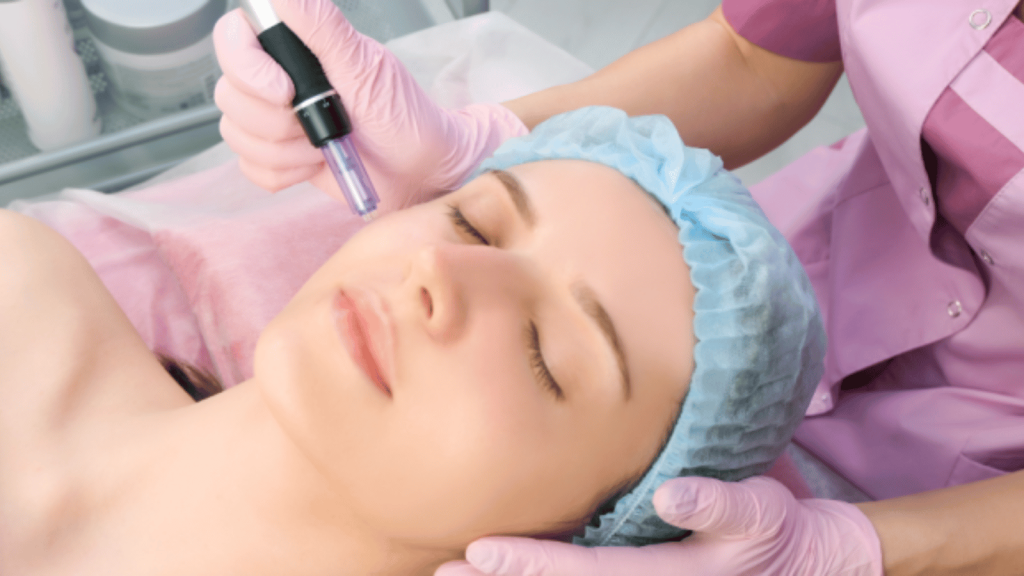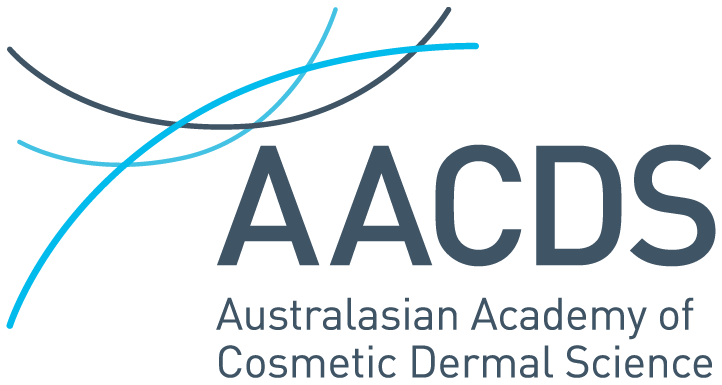Dermal therapist vs beauty therapist vs dermatologist: Choosing the right skincare career

Are you passionate about skincare but unsure where to take your career? The skincare industry is booming and full of job opportunities, from beauty enhancement to advanced clinical treatments and medical dermatology. With so many career paths available, understanding the differences between dermal therapists, beauty therapists, and dermatologists will help you find the best fit for your interests and long-term career goals.
Whether you’re starting fresh or advancing your skills, this guide will help you choose the right path for a rewarding and successful future.
The role of a dermal therapist
Dermal therapists are qualified skin professionals who specialise in advanced skin treatments to improve or maintain healthy skin. Unlike beauty therapists, their work is more clinical and science-based, requiring a deeper understanding of skin biology and evidence-based treatments.
What they do
Dermal therapists provide targeted skin treatments that extend beyond traditional beauty therapy. Their expertise allows them to apply science-backed procedures to assist in the cosmetic management of skin conditions and enhance skin function. On any given day, a dermal therapist might:
- Conduct thorough skin assessments and analysis to address client concerns.
- Perform advanced treatments including laser therapy, chemical peels, skin needling, and microdermabrasion.
- Help to manage skin concerns like acne, rosacea, pigmentation, and scarring.
- Provide pre- and post-cosmetic procedure care.
- Collaborate with dermatologists, cosmetic nurses, and other healthcare professionals.
- Educate clients on effective skincare routines and recommending suitable products.
Where they work
As qualified professionals, dermal therapists work in settings that combine aesthetic enhancements with clinical treatments. Their expertise is valued in both medical and cosmetic industries, and they commonly find employment in:
- Cosmetic Medical clinics: offering advanced skin treatments, including laser therapies and rejuvenation procedures.
- Dermatology clinics: assisting with non-medical skin treatments and supporting dermatologists in patient care.
- Cosmetic surgery centres: providing pre- and post-surgical skincare treatments.
- Skin and laser clinics: performing laser hair removal, pigmentation correction, and acne management.
- Burns clinics: providing scar management, laser therapy, and advanced wound care for burn recovery.
- Beauty clinics: delivering advanced skin treatments including peels and laser-based rejuvenation.
- Skincare companies: working in product formulation, education, or sales, offering expert knowledge on skin health solutions.
Training and qualifications
To work as a qualified dermal therapist in Australia, you must complete either an Advanced Diploma of Cosmetic Dermal Science, or a Graduate Diploma of Dermal Science, depending on your prior experience. You must also register with relevant industry bodies in your state.
To explore this rewarding and in-demand career path—including qualifications, courses and timelines—visit How to become a dermal therapist in Australia: Everything you need to know.
-
Salary and career path
According to Seek, the average salary for a dermal therapist in Australia is around $75,000 per year, though experienced professionals in high-demand areas can earn significantly more.
As a dermal therapist, you could work in all kinds of settings—skincare clinics, hospitals, or even training future professionals. Many dermal therapists go on to specialise in laser therapy, micro-dermabrasion, or clinical education.
With the rising popularity of non-surgical cosmetic treatments, demand for qualified dermal therapists is expected to grow by 12.2% in the coming years, making now the perfect time to
The role of a beauty therapist
Beauty therapists provide a range of cosmetic treatments to improve a client's appearance and foster wellbeing. They focus on non-medical skincare, relaxation treatments, and beauty enhancement. While their work sometimes overlaps with dermal therapists, they don’t typically perform advanced clinical procedures. With expertise in aesthetic techniques and beauty trends, they help clients feel confident and rejuvenated.
-
What they do
Beauty therapists help clients feel their best with treatments that enhance their skin and overall appearance. On a typical day they might:
- Perform facials, manicures, pedicures, and apply makeup.
- Assist clients with hair removal techniques including waxing and laser treatments.
- Apply non-invasive treatments like spray tanning and eyebrow tinting.
Offer skincare advice and recommend cosmetic products.
-
Where they work
Beauty therapists are typically employed in:
- Beauty salons: Providing routine skincare and beauty treatments.
- Day spas: Offering relaxation treatments like massages and body scrubs.
- Wellness centres and resorts: Catering to clients seeking rejuvenation and aesthetic care.
-
Training and qualifications
Most qualified beauty therapists study a Diploma of Beauty Therapy, which can take anywhere from 6 to 12 months to complete. This qualification is available through Registered Training Organisations (RTOs), like our partner RTO Demi International.
-
Salary and career path
Beauty therapists in Australia typically start with a salary of around $65,000 per year, with the potential to earn more based on experience and location. Many beauty therapists move up to managing a salon, running their own business, or specialising in areas like lash extensions and advanced facials.
Can a beauty therapist become a dermal therapist?
Yes, a beauty therapist can transition into dermal therapy by completing additional training, such as our 52850WA Advanced Diploma of Cosmetic Dermal Science.
The role of a dermatologist
Dermatologists are medical doctors who specialise in diagnosing and treating skin, hair, and nail disorders. Their work involves medical, surgical, and cosmetic dermatology.
-
What they do
Dermatologists play a crucial role in diagnosing, managing, and treating a wide range of skin conditions - from common concerns like acne to complex conditions like melanoma. Their expertise spans both medical and aesthetic dermatology, allowing them to provide personalised treatment plans tailored to each patient's needs. Depending on their focus area, they might:
- Diagnose and treat conditions like eczema, psoriasis, acne, and skin cancer.
- Perform medical and surgical procedures, including biopsies and excisions.
- Administer cosmetic injectables, fillers, and laser therapy.
- Conduct skin cancer screenings, including full-body mole mapping and early detection.
- Collaborate with other medical specialists for comprehensive patient care
- Prescribe medications and develop specialised treatment plans.
Where they work
Many dermatologists use their medical expertise to treat all kinds of skin conditions, working in both medical and cosmetic settings, including:
- Hospitals: Treating patients with severe skin conditions and burns.
- Private practices: Offering consultations and ongoing skin treatments.
- Cosmetic clinics: Performing aesthetic dermatology procedures.
- Research institutions: Conducting clinical trials and dermatological studies.
- Medical universities: Teaching and training future dermatologists.
- Public health organisations: Contributing to skin disease prevention and awareness programs.
Training and qualifications
To become a dermatologist, you must complete a 4-6 year medical degree, several years of specialist dermatology training and gain accreditation from the Australasian College of Dermatologists.
Salary and career path
Dermatologists in Australia can earn upwards of $130,000 per year, depending on experience and focus area.
Dermatologists can specialise in pediatric dermatology, cosmetic dermatology, or dermatopathology, offering a variety of career pathways.
Why study with AACDS?
The beauty and personal care market is projected to generate US$7.85bn in 2025—and it’s showing no signs of slowing down. With the demand for skilled skincare professionals increasing globally, now is the perfect time to upskill or kickstart your career in skincare and beauty.
AACDS is a leading Registered Training Organisation (RTO), offering gold-standard education in dermal therapy. Our courses provide:
- Nationally accredited qualifications led by industry experts.
- Online courses with practical training in state-of-the-art facilities across Perth, The Gold Coast, Sydney, and Melbourne.
- Flexible payment options and a comprehensive Graduate Support Program.
- Pathways into advanced dermal therapy, cosmetic nursing, and beyond.
Choosing the right skincare career
Deciding on a skincare career depends on your interests, career goals, and commitment to training. Beauty therapy is perfect for those who are drawn to aesthetic treatments and relaxation-based services, while dermatology suits people committed to more extensive medical training.
If you are passionate about science-based skin treatments and want to work in a clinical environment, dermal therapy may be the best path for you. Thankfully, kickstarting a new career in dermal therapy is easy with AACDS - just fill in the form below to download our Course Prospectus and arrange a time to chat with an AACDS Course Consultant.
Start a conversation and download our Course Prospectus



